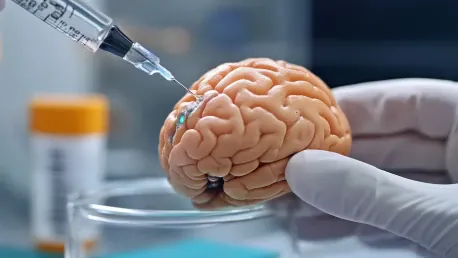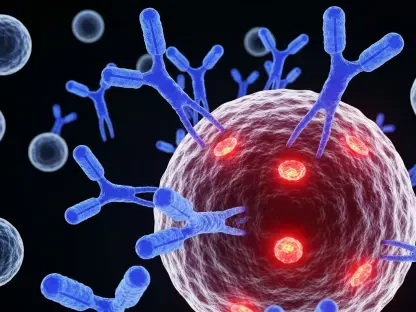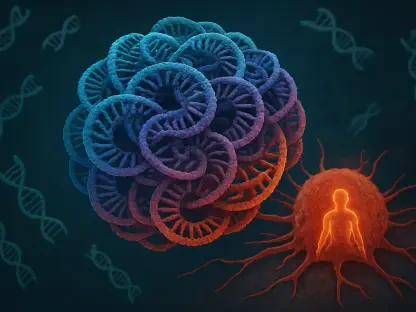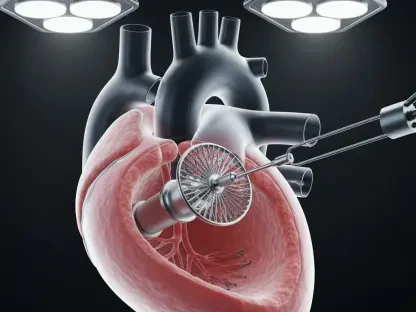A recent study has unveiled a new type of stem cell in the brain that could potentially revolutionize treatments for adult glioblastoma (GBM), a highly lethal brain tumor. Conducted by a team led by Li Wang and guided by senior author Arnold Kriegstein at the University of California, San Francisco (UCSF), the research was published in Nature. The groundbreaking discovery offers crucial insights into how adult brain cells might hijack developmental processes to form tumors like GBM. The research team also developed a disease-risk map that highlights autism spectrum disorder risks in second-trimester intratelencephalic neurons, adding another layer of significance to their findings.
Many brain cancers, including GBM, are believed to originate from ‘cancer stem cells’ that mimic embryonic cell types. These tumors often remain undetected until they have extensively spread and prove notoriously difficult to remove surgically. To investigate this phenomenon, the study utilized a broad genomic survey of human brain cells from donors at various stages of life, from early development to adolescence. These samples, sourced through the National Institutes of Health’s NeuroBioBank and local hospitals affiliated with UCSF, underwent extensive gene expression analysis. The comprehensive approach provided invaluable data for understanding tumor development at the cellular level.
Breakthrough Discoveries in Stem Cell Identification
The researchers performed paired single-nucleus chromatin accessibility and transcriptome analysis on 38 human neocortical samples, spanning from the first trimester to adolescence. Additionally, they carried out spatial transcriptomic analysis on select samples, allowing them to detail the spatial organization and intercellular communication within the brain. By integrating single-cell profiling, progenitor purification, and lineage-tracing experiments, they were able to identify the lineage relationships among progenitor subtypes during the critical neurogenesis-to-gliogenesis transition. Notably, they discovered a tripotential intermediate progenitor subtype, which they named Tri-IPCs. These cells are responsible for producing GABAergic neurons, oligodendrocyte precursor cells, and astrocytes.
The discovery of Tri-IPCs is especially significant because these progenitor cells have the unique capacity for triple lineage differentiation. This means they can develop into three different cell types: two types of glial support cells and one neuron type. Such versatility hints at the potential for these cells to contribute to GBM formation later in life. The researchers emphasized the genetic programs responsible for human brain growth, noting that their misregulation could lead to specific brain disorders. By focusing on neurons from various cerebral cortex regions, they gained insight into the stem cells capable of differentiating into multiple cell lineages, potentially leading to the development of GBM.
Autism Spectrum Disorder and Disease-Risk Mapping
In addition to glioblastoma research, the study’s findings also extended to understanding autism spectrum disorder (ASD). The researchers integrated atlas data with large-scale genome-wide association studies (GWAS) to create a risk map. This risk map revealed significant autism spectrum disorder risk in second-trimester intratelencephalic neurons. The ability to pinpoint specific developmental stages and cell types that might contribute to ASD provides a valuable foundation for further research into the condition and its origins.
This comprehensive disease-risk mapping not only sheds light on healthy brain development but also illuminates the origins of certain brain diseases. By understanding which cell types and genetic programs are involved in both healthy and aberrant development, scientists can build on this knowledge to devise more effective treatments for glioblastoma and other brain-related conditions. The innovative genomic and spatial transcriptomic approaches used in this study contribute significantly to our understanding of brain tumor development and the identification of potential therapeutic targets.
Implications for Future Research and Treatments
A new type of stem cell in the brain has been identified, potentially transforming treatments for adult glioblastoma (GBM), a deadly brain tumor. Led by Li Wang and senior author Arnold Kriegstein at the University of California, San Francisco (UCSF), the study was published in Nature. This discovery sheds light on how adult brain cells may hijack developmental processes to form tumors like GBM. The team also created a disease-risk map indicating autism spectrum disorder risks in second-trimester intratelencephalic neurons, adding to the significance of their work.
Many brain tumors, including GBM, likely originate from ‘cancer stem cells’ that mimic embryonic cell types. These tumors often go undetected until they have spread extensively, making surgical removal very challenging. To investigate this, the researchers conducted a comprehensive genomic survey of human brain cells from donors at different life stages, from early development to adolescence. The samples were obtained through the National Institutes of Health’s NeuroBioBank and UCSF-affiliated local hospitals and underwent extensive gene expression analysis. This thorough approach provided crucial data for understanding tumor development at the cellular level.









